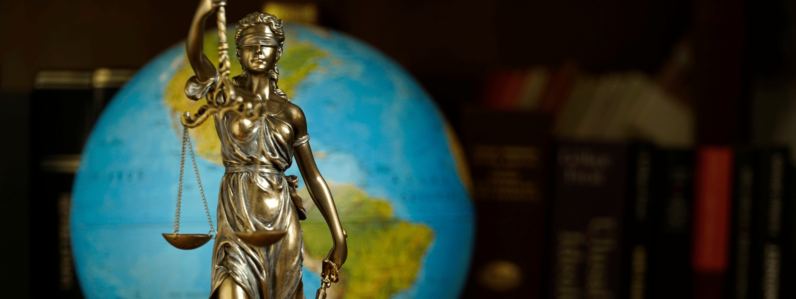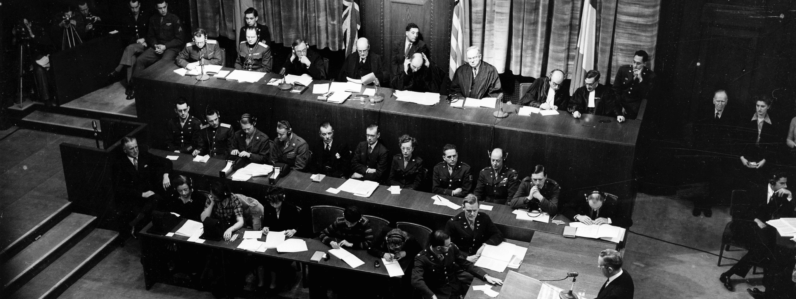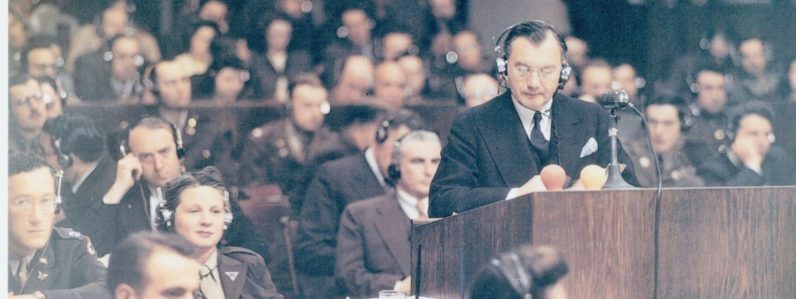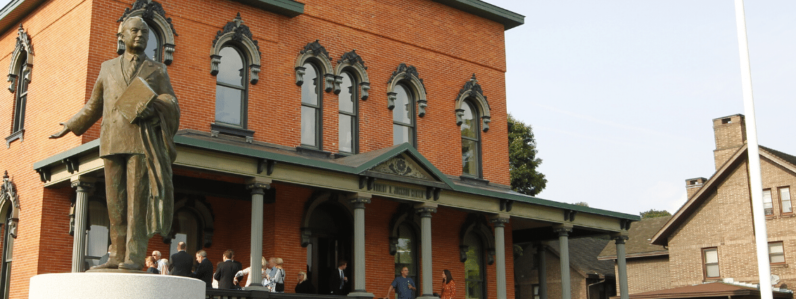Defenders of Freedom Videos
Many of the Defenders of Freedom videos are posted on the Robert H. Jackson Center YouTube Channel. Please visit the Center’s YouTube Channel at:
Lefty Lowenstein of Buffalo, NY was part of an underwater demolition team and was assigned to clear obstacles from Omaha Beach on D-Day.
Doug Benson of Jamestown, NY fought his way from France to the heart of Germany.
Dominic Spitale of Jamestown, NY took a bullet to the head in Okinawa, and was left for dead.
These men have recorded their stories at the Robert H. Jackson Center as part of the Defenders of Freedom project. The project was started by Greg Peterson, Robert H. Jackson Center founder and board member and Phil Zimmer, local author and historian.
Nearly 250 World War II veterans’ stories have been recorded through the project. The stories gathered through the Defenders of Freedom project are about our history; places, dates, facts, battles, but they are much more then that. In the words of one of the participant’s family members, “Doug’s army experience was the single, most substantial event that shaped and influenced the person he is.”
Below are selections from a few stories that the project has collected over the last few years. Many of the Defenders of Freedom videos are post on the Robert H. Jackson Center YouTube Channel. Thank to all the veterans and their families for sharing their stories.
Jeannie Bean, The Manhattan Project, Oak Ridge TN
The Manhattan Project was a secret military project created in 1942 to produce the first US nuclear weapon. One site of the Manhattan Project was a secret town named Oak Ridge in Tennessee. The town housed tens of thousands of workers and their families. The entire town was fenced in, with armed guards posted at all entries. Workers were sworn to secrecy and only informed of the specific tasks they needed to perform. Most were unaware of the exact nature of their final product until the nuclear bombs were dropped on Japan in 1945.
Jennie Bean, and her husband Tom Bean worked at Oak Ridge. Tom was in charge of one of the analytical laboratories where he checked solutions from scrubbers to see how strong the uranium batch was. After being interviewed by the FBI, Jennie got the okay to meet her husband in Oak Ridge and to assist him in the laboratory. When asked how the uranium was transported Jennie did not know whether or not she should answer the question although it was 70 years after the fact. She reluctantly answered and said that regular cars transported the powder created at Oak Ridge to Los Alamos National Laboratory where the process was continued. Security was extremely tight at Oak Ridge, however they did allow families to visit on occasion. Jennie remembers in a letter that she wrote home to her father that she told him about her lab trying to find the correct amount of silver for an experiment and responded that it sounded like they were trying to split the atom. She realized she needed to be more careful about the information she was giving her family for fear that word would get around. Jennie gets really upset when people blame scientists for creating the bomb because they were unaware of the intentions of President Truman to use the bomb on a highly populated civilian area. The scientists signed a petition stating that they wanted to demonstrate to the Japanese the destruction of the bomb in the Pacific Ocean in the hopes that this would be enough to make them want to surrender. This petition was ignored, and Jennie remembers the day that the bomb was dropped, all of the scientists and workers at Oak Ridge were crying.
Angelo Zanghi, Battle of Guadalcanal
Angelo Zanghi is a World War II veteran. Zanghi joined the Navy after Pearl Harbor and was a 3rd class Petty Officer on the USS O’Bannon. He recalls the naval battle of Guadalcanal.
The Battle of Guadalcanal was the first major victory for the Allies in the Pacific theater. With Japanese troops stationed in this section of the Solomon Islands, U.S. marines launched a surprise attack in August 1942 and took control of an air base under construction. Reinforcements were funneled to the island as a series of land and sea clashes unfolded, and both sides endured heavy losses. The Japanese suffered a far greater toll of casualties, and withdrew from Guadalcanal in February of 1943.
Conrad King, Japanese Kamikaze Bombers
Conrad King was drafted into service in January of 1943 and joined the Navy. He was a member of the USS South Dakota. He remembers surviving an attack by the Japanese kamikaze bombers. There were 8 men aboard the ship and Conrad King was the only one that survived.
Beginning in October 1944, following several critical military defeats, the Japanese deployed kamikaze (“divine wind”) suicide bombers against American warships. By war’s end, kamikazes had sunk or damaged more than 300 U.S. ships, with 15,000 casualties.
Steve Domitrovich, Malmedy Massacre
The Last Survivor of the Malmedy Massacre, Steve Domitrovich can still see the SS soldiers legs by his face as he shot the man laying next to him. Mr. Domitrovich was part of Ambulance Company 479 and 575, and drove ambulances during the war.
In December 1944, the Allied forces took over Malmedy, Belgium, and Germany organized an offensive to take back this land – the Battle of the Bulge. On December 17 1944, 84 American prisoners of war were murdered by their German captors near Malmedy, Belgium. Steve Domitrovich remembers the German soldiers lining up U.S. prisoners and shooting. There were guards surrounding them so that they could not escape. There was 43 survivors of the Malmedy Massacre, Mr. Domitrovich was one of them.
According to the National WWII Museum, with statistics from the Veteran’s Administration, “our World War II vets are dying at a rate of approximately 492 a day. This means there are approximately only 855,070 veterans remaining of the 16 million who served our nation in World War II.” There have been over 100 interviews of veterans from Chautauqua, Cattaraugus, Warren, and McKean counties recorded by the Defenders of Freedom Project.
The project relies on donations to keep it going. Supporters of the project include: Jamestown Lodge BPOE #263, Am Vets Post 50, Jamestown, NY Am Rotary, Sugar Grove American Legion, and the American Legion Hallgren-Wilcox. Individual donors include: John Ludwiczak, Lisa Vanstrom, Carol Domineer, Dennis Meyers, and Greg Peterson.
With these generous donations, the Defenders of Freedom Project purchased equipment and supplies that will be instrumental in recording the stories of World War II and Korean War veterans.
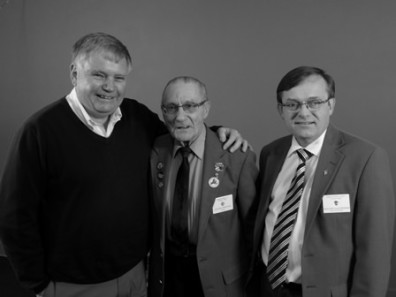
For more Defenders of Freedom videos visit the Robert H. Jackson Center YouTube Channel .




